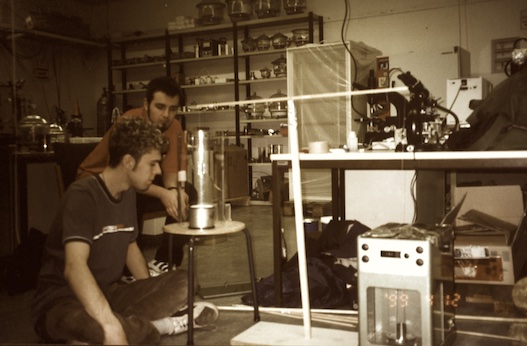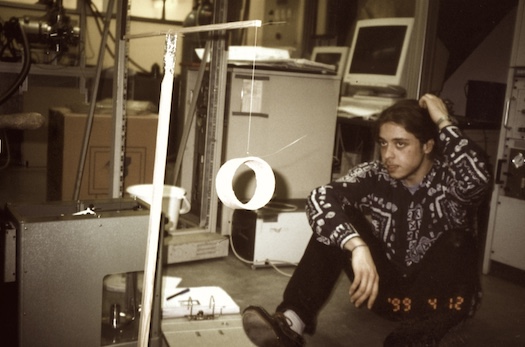In 1997, a German TV series (“Space Night”, see video on the right) portrayed an American inventor, John Schnurer, who made the dubious claim to have found a simple way to shield gravity. His experiment was extremely simple: a superconductor, immersed into liquid nitrogen, led to a reduction of the weight of test masses placed above the superconductor.
As first-semester physics students, two friends (Franz-Josef Schmitt and Josip Milanovic) and I were very skeptical, but curious. We decided to reproduce the experiment in the laboratory — first at the institute led by our late experimental physics professor Paul Müller at the University of Erlangen-Nürnberg, and later at a laboratory of the GÖDE Stiftung in Waldaschaff.
The result was unsurprising and obvious: the supposed “antigravity” effect was nothing but buoyancy due to the heating of the liquid nitrogen that was used to cool the superconductor. We tried different versions of the experiment that were circulating in the internet at that time, and all of them produced the alleged “weight reduction” due to mundane effects like magnetism or buoyancy.
This video is embedded by YouTube and only loads when you click the play button. Google’s privacy policy applies. In particular, Google collects personal data in the form of cookies and in other forms. You can avoid this by not clicking the play button.

Our results were not neat and tidy enough to be published, but enough to convince us that the effect does not exist.
An old, more detailed report of our experiments (in German language) can be downloaded here. It has never been published, and the quality is not good enough to warrant publication, but the results are very suggestive.
